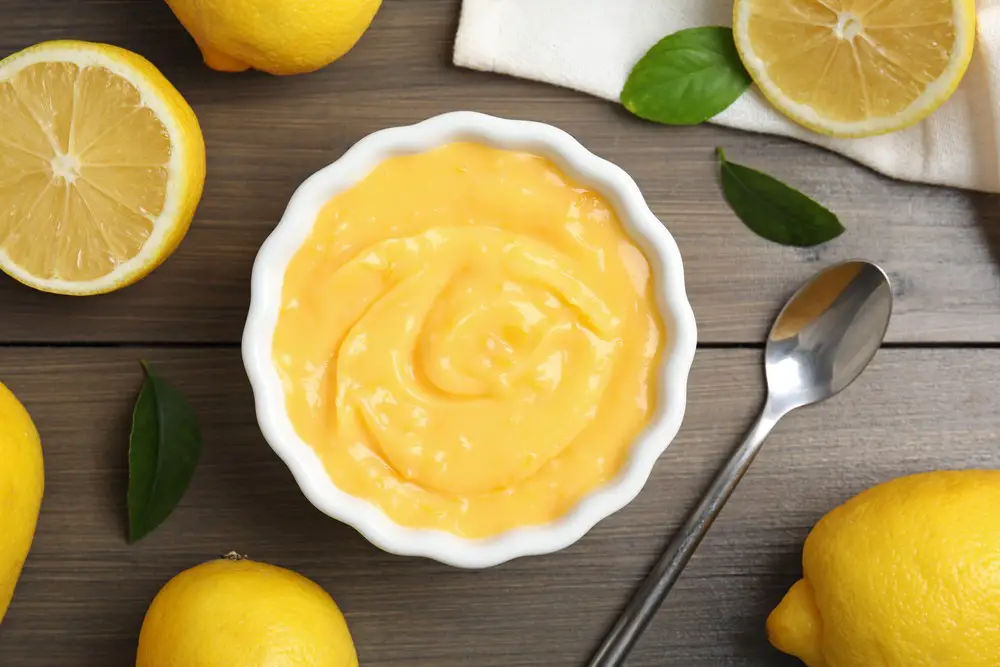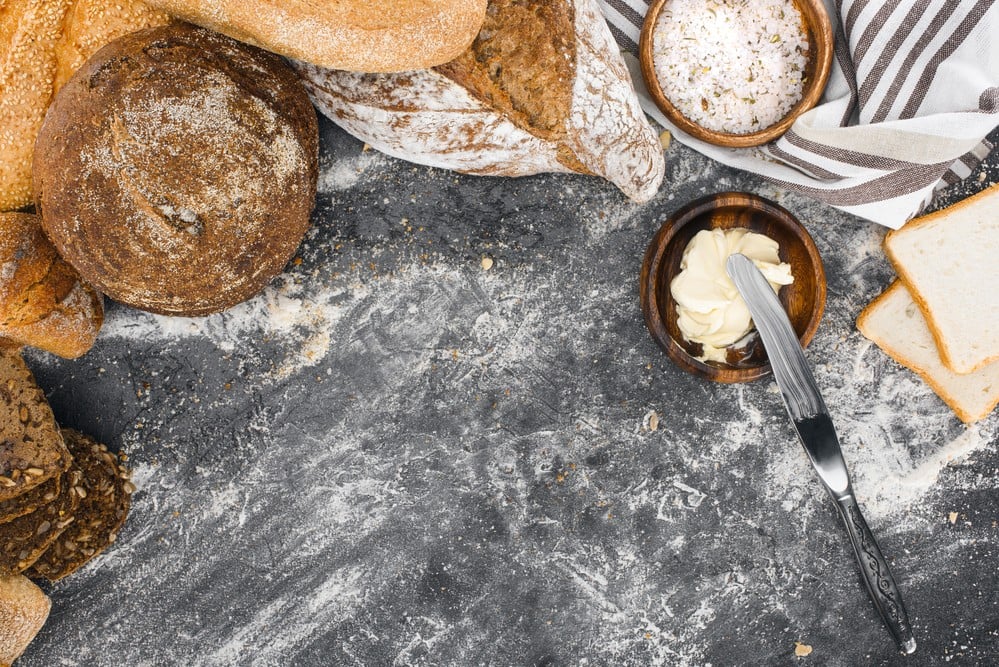As a vegan, you may need to replace dairy butter in a recipe, especially when baking. In recipes needing butter, you can use substitutes like coconut oil, applesauce, mashed avocado, mashed banana, nut butter, or vegetable shortening. However, making plant-based butter is easy. If you want to know how to make vegan butter, then read on.
Homemade Vegan Butter Recipe
Vegan butter has many uses, but it’s not available everywhere. Therefore, it’s a good idea to know how to make vegan butter if you are vegan or lactose intolerant.
LovingitVegan has one of the best recipes for vegan butter, which is buttery and creamy and can be used for baking, spreading, and frying. The butter looks like real butter because a bit of turmeric gives it the color. Adding a little nutritional yeast gives it a buttery flavor but is not essential.
When making vegan butter, most recipes usually call for refined coconut oil, an ingredient preferred because it has a neutral flavor.
Vegan butter needs refrigeration and will get quite hard, but you can leave it out for a little while to soften if you want to cream it for baking or spread it on toast. The ingredients required for vegan butter usually include vegetable oils, which tend to last longer. But it also contains non-dairy milk, which cannot. Therefore, bear in mind that it won’t last more than 2 weeks if refrigerated. Freeze it if you want to use it over an extended period.
Simple Steps for Making Vegan Butter

How to make vegan butter? The steps are very easy. Get the ingredients required for your recipe. Using a blender, blend the ingredients until smooth – usually for up to a minute. Once smooth, pour the butter into the container and refrigerate until set—it will take a few hours.
Simple steps for making vegan butter
- Softening the coconut oil before blending is best to ensure a smooth paste. You can also melt it.
- Adjust the amount of salt to your taste by using a bit more or less than that required by the recipe. Leave it out if you want to make unsalted butter for baking.
- Store the butter in a butter container for serving, but if you need sticks for baking, use silicone molds to make it easier to slip out the butter knobs.
- Double your recipe if you need enough butter for baking, cooking, etc.
Delicious and Dairy-Free: Vegan Butter Recipe
You can make delicious cultured vegan butter at home using live vegan cultures. You can either make vegan yogurt or buy a plain one to use.
Learn how to make vegan butter with this excellent and fast recipe from Holy Cow Vegan. Besides cultured yogurt, the recipe also calls for liquid lecithin, either soy or sunflower, to help emulsify the water-based ingredients and oils, preventing separation. You can omit the lecithin if you want spreadable butter, but it does lend a hardness to butter sticks for baking, making them easier to handle.
Once again, the recipe calls for refined coconut oil and another neutral-flavored oil, like avocado or grapeseed oil, to ensure it doesn’t have the flavor of coconut or olives when using virgin versions of these oils.
Easy Vegan Butter Recipe at Home
Learning more about making vegan butter at home is essential if you want a flavorsome spread for your plant-based diet. Here’s an easy recipe that’s also quick for vegan butter made with almond flour for its buttery flavor. Besides using this vegan butter as a spread, use it on baked or mashed potatoes and in baking. Because of the almond flour, this butter is unsuitable for frying or sautéing, but you can leave it out.
Easy Vegan Butter
Ingredients
- 1 cup refined coconut oil
- ¼ cup avocado or canola oil
- ½ cup almond flour
- ½ cup + 2 T. unsweetened and unflavored plant milk. Soy or oat milk works best.
- 2 t. nutritional yeast
- 1 t. salt
- 1 t. apple cider vinegar
- Pinch of ground turmeric, optional for a bit of color
Instructions
- Before measuring the coconut oil, melt it in the microwave or by standing the jar in hot water. Measure it and set it aside to cool to room temperature.
- In the meantime, place the rest of the ingredients in the blender, except for the two oils, and blend until smooth.
- Next, pour in the coconut and avocado oil, blending further until it looks velvety. Use the blender in short bursts to prevent it from getting too warm; otherwise, the butter may split.
- Pour the butter in this liquid form into a container, cover it, and refrigerate until set.
- Let it soften at room temperature before spreading.
DIY Vegan Butter: A Step-by-Step Guide

Vegan butter consists of ingredients that contain no animal products. As you have seen so far, recipes on how to make vegan butter have some common ingredients.
When making DIY vegan butter, the aim is to ensure a creamy butter that’s easy to spread while creating a nutritional and flavorsome result. Here’s a step-by-step guide to the ingredients and methods required to make vegan butter:
Vegetable Oil is the most common ingredient used as the base for vegan butter. Typical vegetable oils include coconut, palm, or canola oil. These oils have a high content of healthy fats and neutral flavor, making them ideal for vegan butter-making. However, adding ingredients like plant-based milk, nuts, or seeds helps give the butter a rich and creamier texture.
Cashews and almonds are the most common nuts used to add depth of taste to vegan butter because of their flavor. They also have a higher fat content than other nuts, becoming more buttery once blended, allowing for a smoother texture.
The slightly earthy flavor of seeds is another addition to many DIY vegan butter recipes. It’s best to grind seeds fine before adding them to the blender to ensure a smooth texture. Seeds like pumpkin and sunflower are high in nutrients. They also contain protein and fiber, making them an excellent addition to your butter.
Finally, like the churning required to make dairy cream into a semi-solid state, you use a blender to emulsify the fats with the rest of the ingredients in a blender.
Creating Vegan Butter: Tips and Tricks
Here are some essential tips and tricks to remember when learning how to make vegan butter:
Use lecithin – Lecithin is a food additive containing plant-based fat molecules. It’s an emulsifier, meaning it gives the vegan butter a solid but spreadable consistency while preventing the separation of the fats from the other liquids used. The most popular types of lecithin are soy and sunflower. You can find it in liquid and granulated form from online specialty stores or health food stores.
Decide on the non-dairy milk – Rarely will you see a recipe for non-dairy butter that requires a particular type of vegan milk. That’s because any vegan milk will do as long as it’s unsweetened. If you are allergic to nuts, use a nut-free option like oat, soy, or hemp milk.
Use nutritional yeast – Nutritional yeast helps improve the final consistency of the vegan butter by making it creamier.
Importance of using refined coconut oil – The saturated fats in coconut oil make it essential in vegan cooking because it imbues a richer flavor and stability. However, unrefined coconut oil has a strong coconut flavor, something you won’t want in your vegan butter, so use only refined oil.
Store correctly – Use a container with a lid to keep your vegan butter covered once made. Refrigerate and use within two weeks. Freeze in airtight containers for up to three months. Defrost in the fridge overnight or leave it at room temperature for about half an hour.
Remember that homemade vegan butter may not contain trans fats. It also won’t contain additives or preservatives like vegan butter bought in stores. However, it does have a high fat and calorie content, so it’s wise to use it sparingly.
Whip Up Your Own Vegan Butter
Many people ask if margarine is a vegan butter. The answer is no. They are similar but not the same because margarine is often not vegan. Even though many margarines are labeled plant-based, you must check the ingredients because they may contain casein, whey, lactose, and animal-derived lecithin.
Whip up a batch of your vegan butter, and you won’t be disappointed. It will have a texture and flavor that surpasses any store-bought variety.
Simple Vegan Butter Recipe Containing Cashews
The cashews give this butter a creamy flavor, meaning you won’t need plant-based milk.
Ingredients
- 1 cup raw cashews, soak them overnight
- ½ cup melted refined coconut oil
- ¼ cup water
- 1 T. nutritional yeast
- 1 T. lemon juice
- ½ t. salt
Instructions
- Drain the soaked cashews and rinse them.
- Next, blend them in a blender or food processor with the remaining ingredients until smooth.
- Pour the mixture into a butter container or jar and refrigerate for 2 hours before using as you would any traditional butter or margarine.
The Best Vegan Butter Recipe to Try Today
Vegan butter is cholesterol-free, has less saturated fat, and has fewer calories. Therefore, it’s the ideal choice for anyone preferring a healthy and sustainable choice. Make it by blending their vegetable oils and other ingredients to create a rich and creamy product that tastes delicious.
The best things in life are usually simple. Here’s a recipe from Masterclass that shows you how to make vegan butter with six ingredients in three steps. Vegan butter competes with traditional butter in taste and is the healthier and more sustainable alternative.

